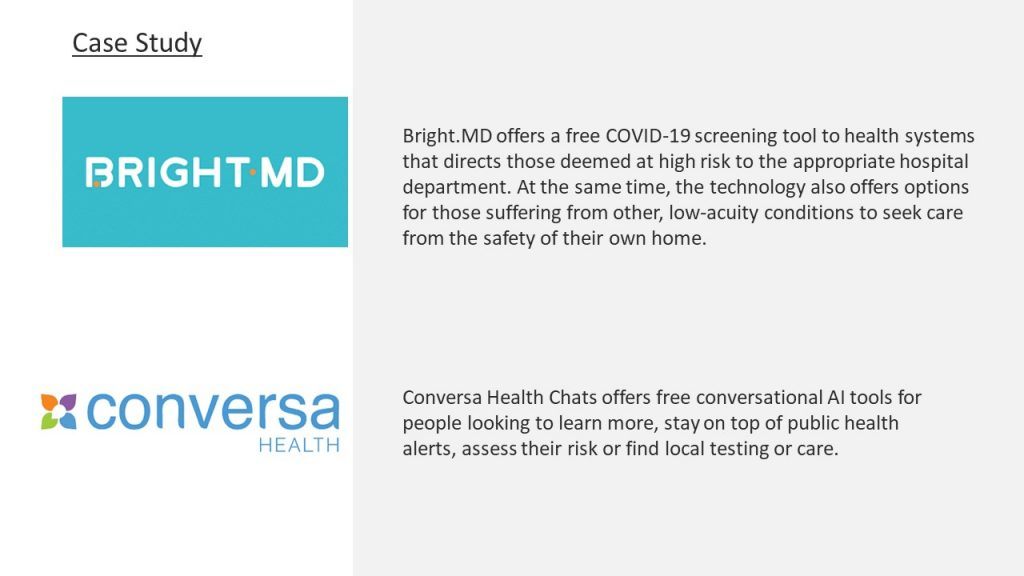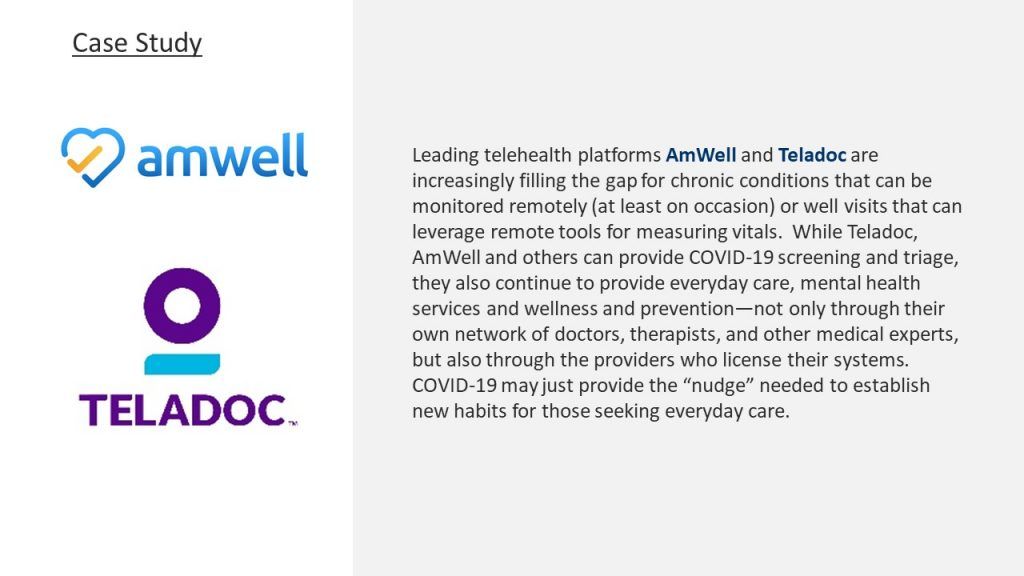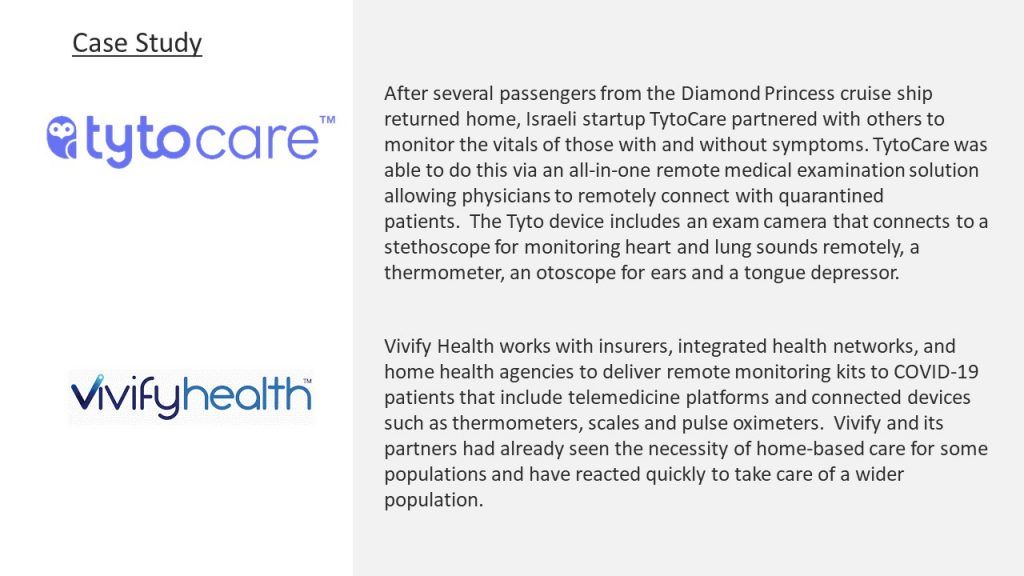Much has been written in the past month or so about how COVID-19 has contributed to a long-anticipated growth spurt in telehealth, a field that, for years, has been full of nascent opportunity with respect to its potential to screen, diagnose, treat and manage a myriad of health conditions. However, until now, telehealth has been unable to break from the confines created by heavy regulation, reimbursement challenges and inertia among those who are comfortable with more established ways of doing things.
Prior to the COVID-19 outbreak, only 16% of patient visits were conducted remotely. As of early April, the average share was up to 60%[1]. Additionally, the American Telemedicine Association projects that 50% of healthcare services in the U.S. will be conducted virtually by 2030.
As the proverbial levee containing telehealth breaks, many players will vie for leadership or their own niche positioning in a market that, in theory, has plenty of demand to go around. For patients and providers alike, the COVID-19 pandemic may be a catalyst for the widespread trial of telehealth, but only time will tell which models are best positioned to generate loyalty.
Below we examine several telehealth value propositions, along with potential opportunities and challenges in the longer term.
Screening the Worried Well & Triaging the Sick
To address those concerned about COVID-19, but not sick enough to justify a trip to the hospital, many existing leaders in telehealth have developed online COVID-19 screening tools based upon CDC and other institutional guidance, adding to their arsenal of screening tools for other physical and behavioral health conditions. Some of these screening tools are powered by artificial intelligence. For example, instead of a nurse, a bot starts the screening process and hands patients off to a human as needed. Others are powered by human intelligence. Both models are meant to be a first step for the “worried well” or for those suffering non-emergent symptoms.

Platforms like these can be accessed directly by patients, who can choose to pay out of pocket or enter their insurance information to determine coverage eligibility. Or, in some cases, these platforms are offered via health plans and health systems hoping to ensure that care is delivered in a way that optimizes quality, costs, and convenience for patients. For COVID-19, these entities also aim to keep people out of the hospital for both health and economic reasons to avoid overloading the hospital system.
- Opportunities
- Potential to reach a wide base of people who, in the long run, may find telehealth as a safer and more convenient first step
- Providers and payers can integrate population health data and AI to increase epidemic preparedness
- Challenges
- Low touch, low frequency, and reliance on a broad array of physicians who may or may not be connected to the patient may limit the ability to tout all-important doctor-patient relationship as a benefit
- Converting one-time triers into regular, loyal users of telehealth platforms and/or loyal users of the providers who license the platforms as a backbone
Routine Visits
While it may seem that COVID-19 is usurping all health system capacity worldwide, the sad reality is that other conditions have not gone away to make room for it. Those who are ill from other conditions—including conditions that put them at higher risk of COVID-19 infection—still need to see a doctor! To say nothing of healthy people who are advised to get regular checkups.
- Opportunities:
- Positioning platform as an alternative to in-person visits for other conditions may help to reframe telehealth as an ongoing, long-term option for treating and managing a range of conditions
- Licensing platforms to health plans, private practices and health systems provide greater continuity of treatment and do not disrupt relationships
- Challenges:
- May require extra focus on the customer experience to increase engagement (during and between virtual visits) and foster loyalty
- Potentially niched between urgent care (high acuity, high touch) and physicians’ offices (for regular care)

Monitoring Remotely (including suspected COVID-19)
But what of those conditions that require a physical exam to collect vitals to send to labs and the use of complex devices?
Some digital health companies use remote, peripheral devices to capture physiological data such that they can monitor those at low enough risk to stay home, while others such as Doctor On Demand–which can be accessed directly or through contracted health plans and employers– partner with diagnostic labs to easily direct patients to labs and review results.

- Opportunities:
- Can be positioned to providers and payers alike as an opportunity to engage patients and increase adherence to treatment
- An additional tool for patients to give them control over their own health
- Challenges:
- Patients, caregivers and even providers wary of “Big Brother” may need reassurances about privacy and how data will be protected and de-identified such that it can’t be used against patients
- Platforms need to partner closely with patients’ regular physicians to ensure that remote monitoring is positioned as a value-add and not a replacement for doctor visits
The current pandemic is tearing down the regulatory and reimbursement barriers that have prevented telehealth from realizing its full potential to date. With those barriers down, telehealth providers may finally enter the next stage of growth allowing them to focus on overcoming cultural or behavioral barriers to continued adoption by patients and providers alike, followed by improving the overall customer experience and generating loyalty.
